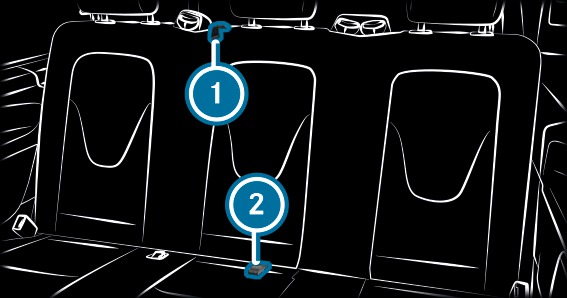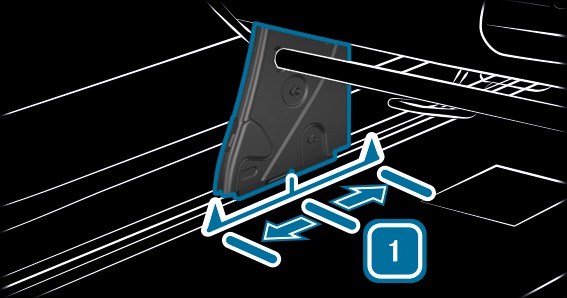When adjusting a rear bench seat, you or another vehicle occupant could become trapped by the guide rail of the rear bench seat, for example.
If you move the rear bench seat while driving, the seat may move in an unexpected or jerking manner, for instance when braking.
You could become trapped as well as thrown against parts of the vehicle or other vehicle occupants.
If you move the seat position outside the marked area, the window airbag can no longer provide optimum protection.
The protective effect of the window airbag is gradually reduced and may in some positions no longer be provided at all.
If you move the seat‑/‑bunk combination outside the markings on the guide rail, this could result in the passenger striking their head on the seat.
The function of the seat belt retractor can be impaired by pulling on the seat belts to adjust the seat backrest.
If you grasp and push the seat/bunk combination by the stowage compartment plastic cover only, the cover may break off.
If the space in front of or behind the seat/bunk combination is not clear, objects can become trapped when moving.
The seat/bunk combination, trim or the objects may become damaged.



Use only the corresponding grab straps  and
and  to adjust the seat/bunk combination.
to adjust the seat/bunk combination.
The seat/bunk combination can accommodate three persons. You can adjust the seat backrest to a vertical and horizontal position. If you adjust the seat backrest to the horizontal position, together with the bed extension, you will have a full-length bed for two people.
Passengers may use the seats of the seat/bunk combination only when the seat backrest is upright. Only then do the seat belts provide the intended degree of protection.
The seat/bunk combination is fitted with two removable stowage compartments under the sitting surface More. You can use these stowage compartments to store bedding, for example.


Starting from the basic setting  , the seat/bunk combination for passengers can be moved forwards or backwards by 5 cm. In doing so, make sure that passengers have sufficient legroom to reduce the risk of injury during braking.
, the seat/bunk combination for passengers can be moved forwards or backwards by 5 cm. In doing so, make sure that passengers have sufficient legroom to reduce the risk of injury during braking.

